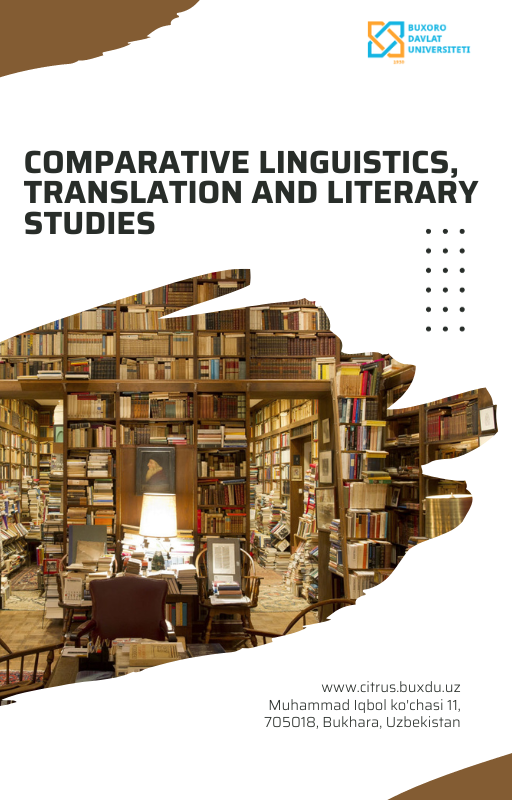Mapping Diversity and Equity Challenges in Moroccan Teacher Education
Keywords:
Inter-Cultural Diversity, Inclusivity, Equity, Moroccan Teacher Education, Sub-Saharan StudentsAbstract
Background: Morocco, as a transit and destination hub for (im)migrants, has witnessed increasing cultural and linguistic diversity in its classrooms. Specific Background: While Moroccan education reforms promote equity, there is limited research on how effectively this is realized for Sub-Saharan migrant students. Knowledge Gap: The extent to which teacher education and classroom practices accommodate the needs of these students remains underexplored. Aims: This study investigates the perceptions of both Moroccan teachers and Sub-Saharan students regarding inclusivity, diversity, and equity in Moroccan schools. Results: Findings reveal that while teachers strive to create inclusive environments, the current curriculum and pedagogies fall short in addressing the cultural and linguistic diversity of Sub-Saharan students, leading to unequal learning experiences. Novelty: This research highlights the significant gap between policy intentions and practical implementation of inclusive education for migrant students. Implications: The study suggests the need for curriculum reform, enhanced teacher training, and intercultural awareness to foster equitable education for all students in Moroccan classrooms.
Highlights:
- Moroccan classrooms are becoming increasingly diverse, yet reforms are not fully addressing migrant students' needs.
- Teachers strive to create inclusive environments but face challenges like biased materials and limited training.
- Systemic reforms in teacher education and curriculum design are essential to support the inclusion of migrant students.
References
Banks, J. A. (2001). Multicultural education: Characteristics and goals. In Banks, J. A. & C. McGee Banks (Eds.), Multicultural education: Issues & perspectives (pp. 15-30). New York, NY: John Wiley & Sons Inc.
Banks, J. A. (2004). Multicultural education: Historical development, dimensions, and practice. In J. A. Banks & C. A. M. Banks (Eds.), Handbook of research on multicultural education. (pp. 3–29). San Francisco: Jossey-Bass.
Banks, J. A. (2019). Multicultural education: Issues and perspectives (10th ed.). Wiley.
Bennett, M. J. (2008). Transformative training for intercultural development. Intercultural Education, 19(6), 543-554.
Creswell, J. W., & Poth, C. N. (2018). Qualitative inquiry and research design: Choosing among five approaches (4th ed.). SAGE Publications.
Deardorff, D. K. (2006). The identification and assessment of intercultural competence as a student outcome of internationalization. Journal of Studies in International Education, 10(3), 241-266.
Denzin, N. K., & Lincoln, Y. S. (Eds.). (2011). The SAGE handbook of qualitative research (4th ed.). SAGE Publications.
El Boubebkri, A., & Saidi, B. (2022). Cross-cultural adaptation of international students in Moroccan higher education: the case study of Sub-Saharan African students at Mohammed First University. Saudi Journal of Language Studies, 2(3), 170-186.
Gay, G. (1994). Educational equality for students of color. In Banks, J. A. & C. McGee Banks (Eds.), Multicultural education: Issues and perspectives (pp. 195–225). Boston: Ally & Bacon
Gay, Geneva. Multicultural Education, Purposes and Goals. In Encyclopedia of Diversity in Education, (Eds): James A. Banks, 1548–1553. Thousand Oaks, CA:Sage, 2012.
Gorski, P. C. (2008). Good intentions are not enough: A decolonizing intercultural education. Intercultural education, 19(6), 515-525.
Grant, Carl A. Contributions of Multicultural Education toEducational Theory and Practice.” In Handbook ofResearch in the Social Foundations of Education, editedby Steven Tozer, Bernardo P. Gallegos, and Annette M.Henry; section editors Mary B. Greiner and Paula G.Price, 549–564. New York: Routledge, 2011.
Ladson-Billings, G. (1995). Toward a theory of culturally relevant pedagogy. American Educational Research Journal, 32(3), 465-491.
National Association for Multicultural Education (NAME).“Missions, Goals, and Objectives.” http://www.nameorg.org/mission_goals_objectives.php.
Ndura, E., & Dogbevia, M. K. (2013). Re-envisioning multicultural education in diverse academic contexts. Procedia-Social and Behavioral Sciences, 93, 1015-1019.
Nieto, S. (2010). The light in their eyes: Creating multicultural learning communities. Teachers College Press.
Nieto, S., & Bode, P. (2007). School reform and student learning: A multicultural perspective. Multicultural education: Issues and perspectives, 425-443
O’Leary, E. S., Shapiro, C., Toma, S., Sayson, H. W., Levis-Fitzgerald, M., Johnson, T., & Sork, V. L. (2020). Creating inclusive classrooms by engaging STEM faculty in culturally responsive teaching workshops. International Journal of STEM education, 7, 1-15.
Rios, Francisco, and Christine R. Stanton (2011). Understanding Multicultural Education. Lanham, MD: Rowman&Littlefield Education.
Rothenberg, P. (2000). Beyond the food court: Goals and strategies for teaching multiculturalism. Feminist Teacher, 3(16), 61–73
Saidi, B. & Boustar, R. (2024). Critical Intercultural Education in Moroccan Teacher Education: Practical Insights for Teacher Candidates. In A.F. Selvi (Ed.).C. Kocaman (Ed.). International Perspectives on Critical English Language Teacher Education: Theory and Practice (pp. 223–228). London: Bloomsbury Academic. Retrieved August 3, 2024, from http://dx.doi.org/10.5040/9781350400351.ch-29
Saidi, B. (2024). Intercultural education in the Global South: decolonising canonical intercultural models in Moroccan University MA program courses. Language and Intercultural Communication, 1-15.
Sleeter, C. E. (1997). Mathematics, multicultural education, and professional development. Journal for Research in Mathematics Education, 28(6), 680-696.
Sleeter, C.E., & Grant, C.A. (1999). Making choices for multicultural education: Five approaches to race, class, and gender (3rd ed.). New York: Wiley.
Downloads
Published
How to Cite
Issue
Section
Citation Check
License
Copyright (c) 2024 Rania Boustar

This work is licensed under a Creative Commons Attribution 4.0 International License.
Copyright
Authors who publish with Comparative Linguistics Translation and Literary Studies agree to the following terms:
- Authors retain copyright and grant the journal right of first publication with the work simultaneously licensed under a Creative Commons Attribution 4.0 International License that allows others to share the work with an acknowledgment of the work's authorship and initial publication in this journal.
- Authors are able to enter into separate, additional contractual arrangements for the non-exclusive distribution of the journal's published version of the work (e.g., post it to an institutional repository or publish it in a book), with an acknowledgment of its initial publication in this journal.
- Authors are permitted and encouraged to post their work online (e.g., in institutional repositories or on their website) prior to and during the submission process, as it can lead to productive exchanges, as well as earlier and greater citation of published work.
License
This work is licensed under CC BY 4.0






